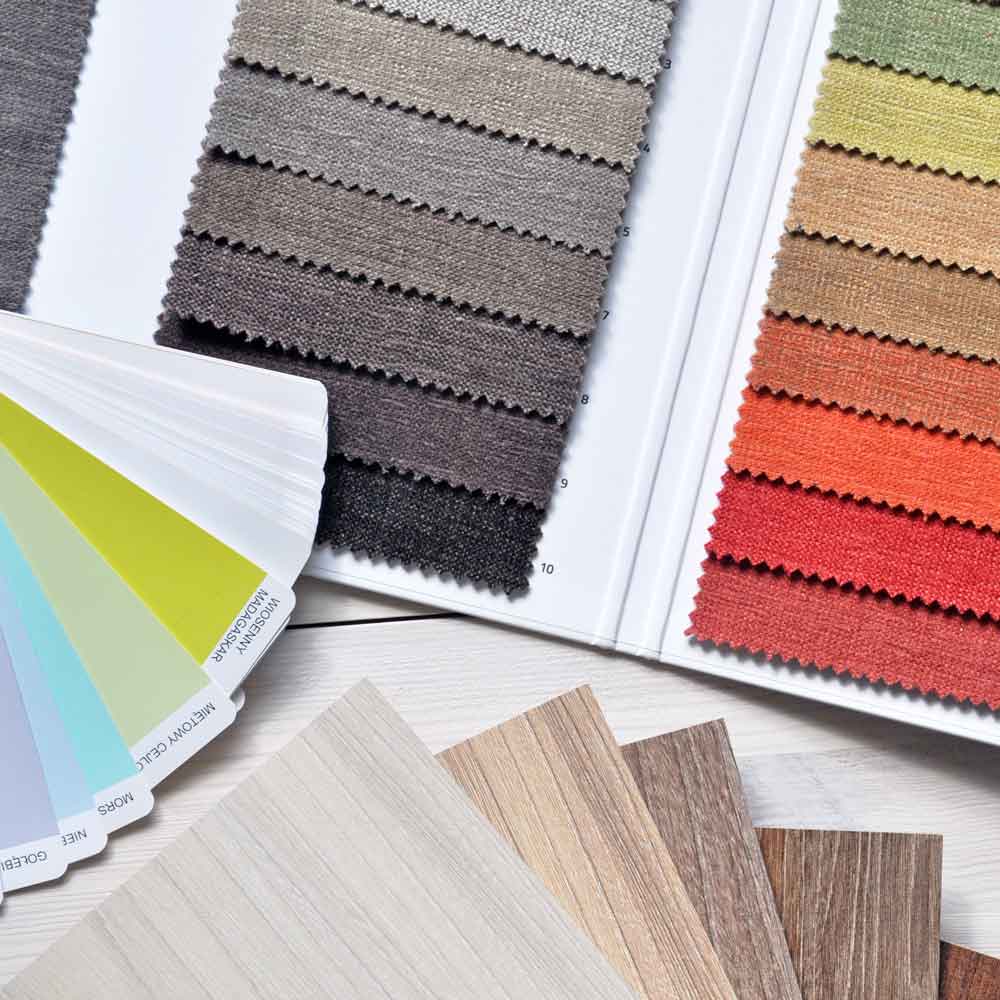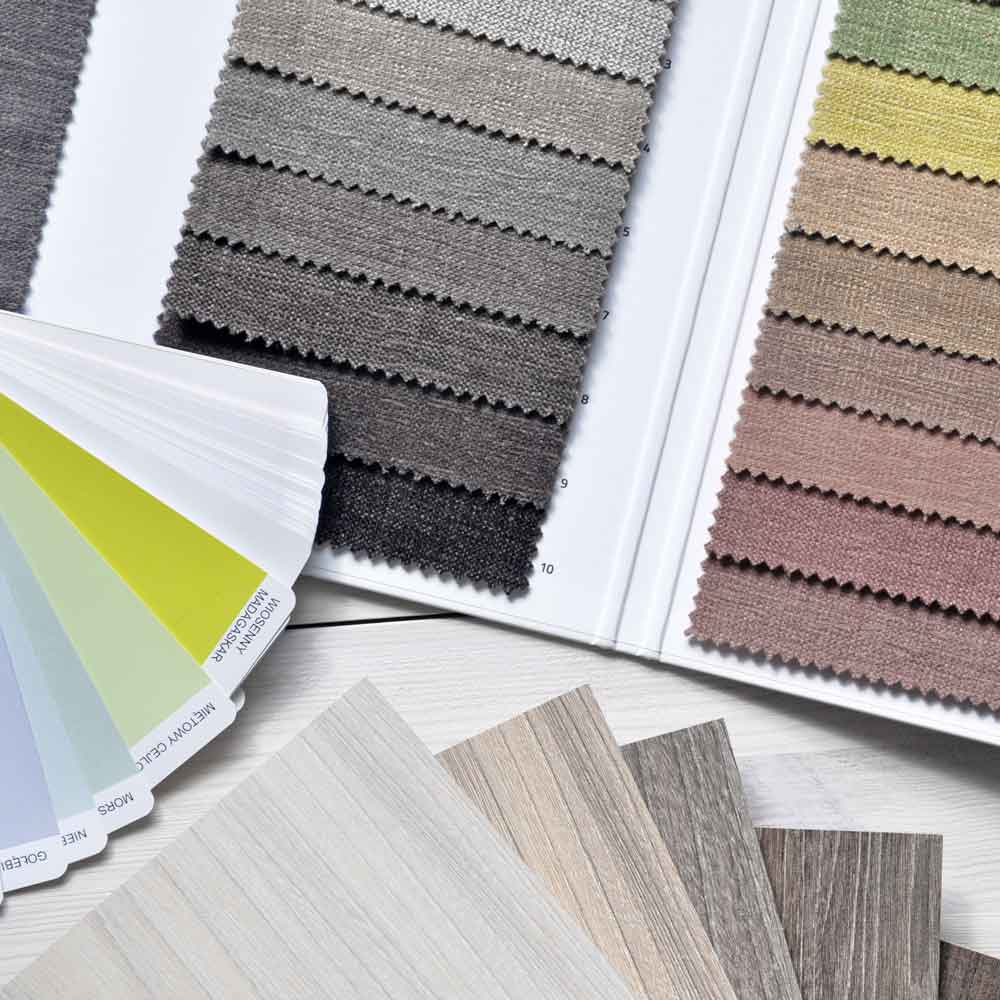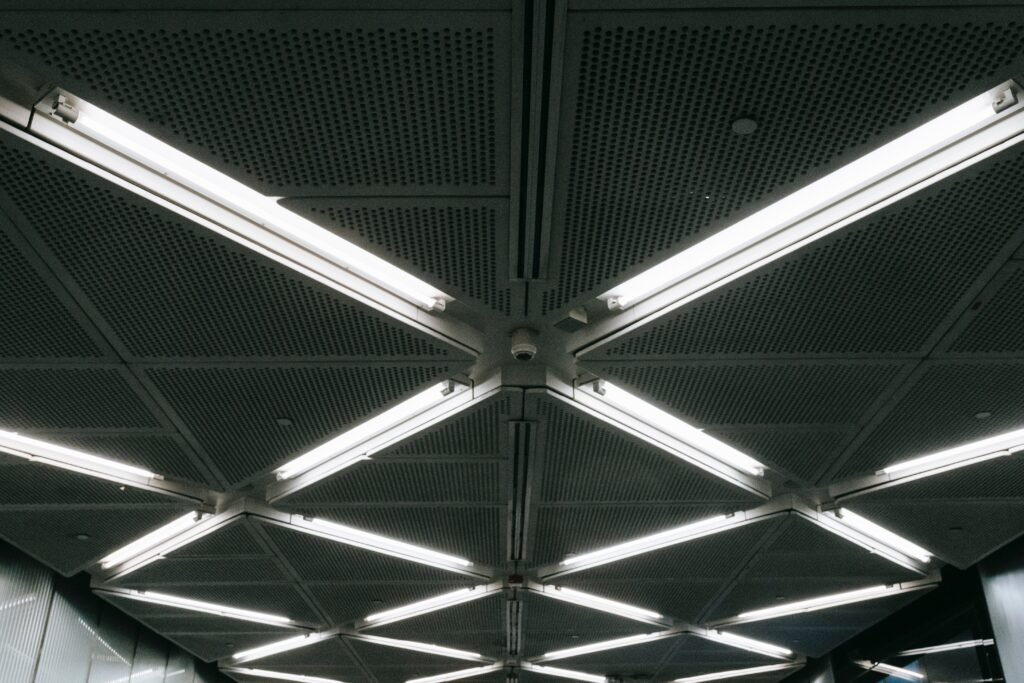What is an LED Tube Light?
LED tube lights are long, linear lamps designed to operate in traditional fluorescent fixtures. The most common type of LED tube light is the T8 4-ft LED tube light, designed to replace 4-ft fluorescent lamps.
The most common LED tube light types include:
- T8 LED tube (1 inch diameter)
- T12 LED tube (1.5 inch diameter)
- T5LED tube (5/8 inch diameter)
The number after the letter “T” indicates the diameter of the tube, in eighths of an inch. A T8 lamp, therefore, has a diameter of 8 eighths of an inch (8/8 inch), or exactly 1 inch.
Each of these LED tube light types can be found in a variety of lengths, ranging from 1-ft (30 cm) to 8-ft (240 cm).
Advantages of LED Tube Lights
LED tube lights have numerous advantages over fluorescent lamps.
- Up to 50% energy savings compared to fluorescent lamps
- Longer lifetimes – up to 50,000 hours of continuous operation
- With proper design, higher color quality, and lower flicker
- No toxic chemicals such as mercury can be released from broken fluorescent lamps
Are LED tube lights the right choice?
LED tube lights are superior to their fluorescent counterparts in almost every way. But that doesn’t mean that your lighting installation necessarily must use LED tube lights. In fact, we generally recommend LED tube lights only when all of the following statements are true:
- You already have compatible fluorescent fixtures installed and are satisfied with their placement and light distribution
- You are comfortable and familiar with performing basic electrical work, or you have access to a qualified electrician
- If rewiring work is needed, you have sufficient resources (time, equipment, and if applicable, labor costs) to complete the work
Many fixtures are mounted on very high ceilings, and rewiring work can be a lot more difficult when performed on a ladder while facing upwards!
In many cases, other LED lighting options such as LED shop lights, integrated fixtures and even LED strip lights may be better suited for a lighting installation.
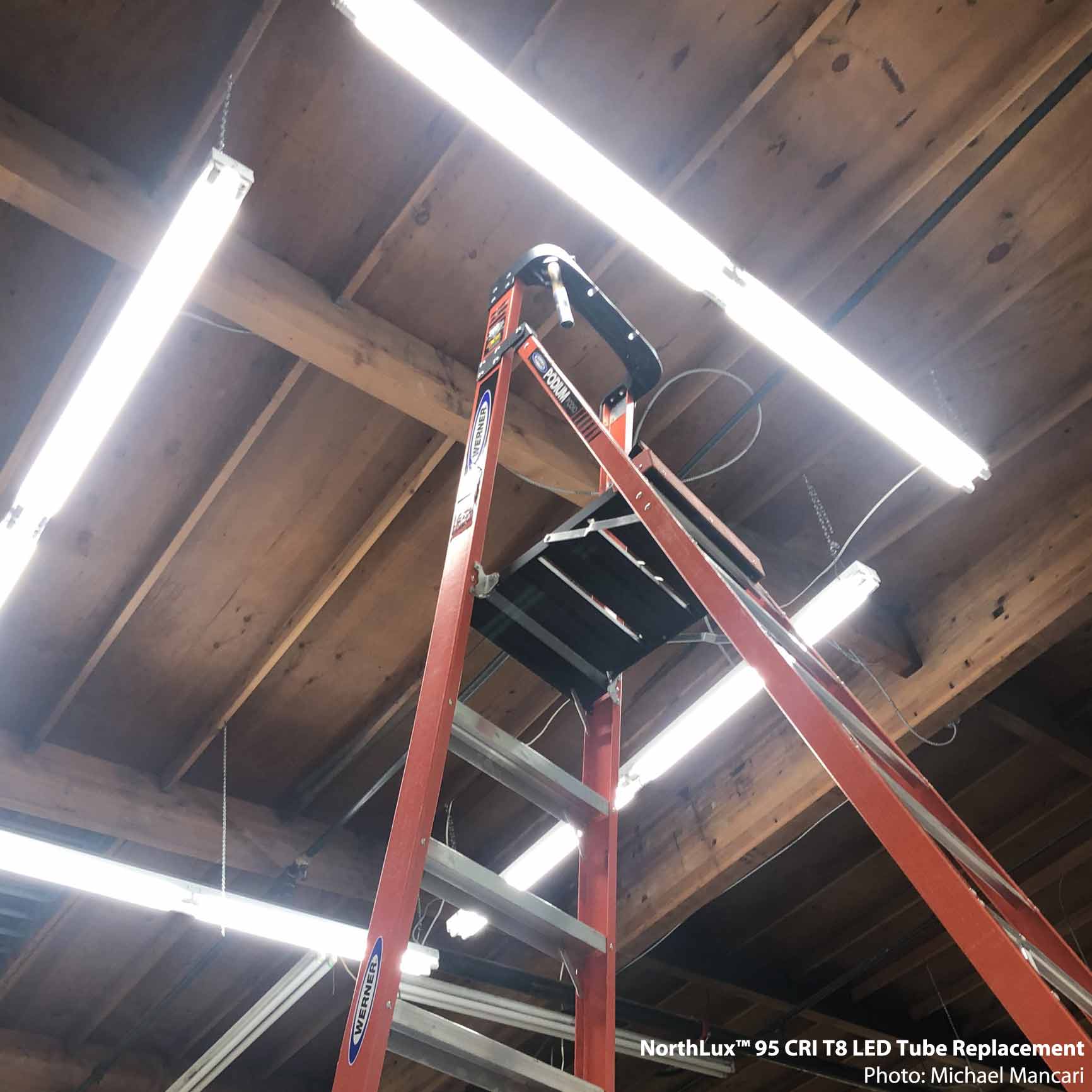
Are LED tube lights physically compatible with my fluorescent fixture?
Let’s say you’ve found an LED tube light product, but you aren’t sure if it will work in your fluorescent fixture. How can you check for compatibility?
We break this down into two separate questions – (1) Is the fixture physically compatible, and (2) is the fixture electrically compatible? Only if the answer to both of these questions is yes, we can be assured of a safe and reliable installation.
How to Check for Physical Compatibility
- Lamp length: The LED tube light’s length should perfectly match the distance between the lamp holders of the fluorescent fixture. If you are unsure, you can physically measure the fluorescent fixture to double-check. The most commonly seen T8 4-ft fixtures, for example, should measure exactly 48 inches in between the lamp holders.
- Lamp pins: Next, we need to determine if the metal contact pins on both ends of the lamp are compatible. The easiest way to check this is to remove an existing lamp and examine the pins on the end of the lamp and measure the distance between the pins to determine the pin specification. The most common type for T8 and T12 lamps is the G13 bipin (0.5 inch / 13 mm apart), and T5 lamps is the G5 bipin (0.2 inch / 5 mm apart)
Both T8 and T12 lamps typically utilize the same G13 Bipin. Therefore, a T8 LED tube light is physically compatible with a T12 fluorescent fixture, and conversely, a T12 LED tube light is also physically compatible with a T8 fluorescent fixture (assuming they are the same length).
Remember, just because it fits, doesn’t mean that it is safe to operate! Physical compatibility ≠ and electrical compatibility. Read on to the next section to determine electrical compatibility.
Types of LED Tube Lights and Wiring Methods
Unfortunately, fluorescent fixtures are a lot more complicated than the standard E26 residential lamp fixtures everyone is familiar with. This is because fluorescent lamps require a special electronic device called a fluorescent ballast, which helps regulate electrical current and voltage.
Unlike fluorescent lamps, LED technology does not require an external ballast device for stable operation. However, because virtually all fluorescent fixtures already have fluorescent ballasts installed, LED tube light manufacturers have developed products with embedded electronics that allow the LED tube lights to be backward-compatible with fluorescent ballasts.
As a result, some LED tube light products on the market are not at all compatible with fluorescent ballasts, while others are only compatible with fluorescent ballasts.
Before selecting an LED tube light product, you must carefully review the product’s wiring configuration to determine if it will be compatible with your existing fluorescent fixture.
Below are the possible wiring methods for LED tube lights:
Ballast-Compatible
In a “ballast-compatible” wiring configuration, the fluorescent ballast remains connected to the electrical circuit. As long as the LED tube light and fluorescent ballast are compatible, no rewiring work is needed. Simply remove the fluorescent lamps from the fixture, and insert the new LED tube lights.
This configuration is sometimes also called Type A or “plug and play” compatible.
Direct-Wire, Single Ended
“Direct-wire” refers to a wiring configuration where line voltage wires are connected directly to the LED tube light. Single-ended direct-wire connections feed live and neutral wires to the same set of input pins on a single end of the LED tube light. The opposite end remains unconnected.
This configuration is sometimes also called UL Type B or direct drive.
Direct-Wire, Double Ended
Some direct-wire LED lamps are designed for double-ended connections. These lamps require live and neutral wires to be connected to the opposite ends of the LED tube light. Generally, wires can be connected to one or both pins on each end (shunted lamp holders will feed current to both pins).
What’s my fixture wiring configuration?
Fixture modification should only be performed by qualified individuals with knowledge of lamp fixture operation and installation. If you are not qualified or not comfortable, seek a qualified electrician’s assistance.
Once you’ve determined the requirements for the LED tube light’s wiring configuration, you will want to check that your fluorescent fixture’s wiring is compatible.
If your fluorescent fixture currently houses fluorescent lamps, it most likely has a fluorescent ballast inside the fixture. If your LED tube light is “ballast-compatible,” no fixture rewiring is needed, but you will still need to ensure that the fluorescent ballast is on the LED tube light manufacturer’s approved ballast list. Use the step-by-step instruction photos shown here to open up the fixture and obtain the ballast’s model number so that you check that it is on the approved ballast list.
Unfortunately, the ballast model number typically cannot be determined from the fixture model number alone. The most reliable way to check on your fluorescent fixture’s wiring configuration is to open the fixture and physically check the wires inside the fixtures.
If the fixture has already been modified for use with LED tube lights, open up the fixture and follow the input wires to determine how it is configured (i.e. direct-wire single-ended or double-ended) and check if the LED tube light is compatible with that wiring configuration. Fixture rewiring requires more advanced knowledge of electrical installation and wiring; be sure to consult a qualified electrician if you are unsure about how to perform this work.
Still unsure about fixture compatibility?
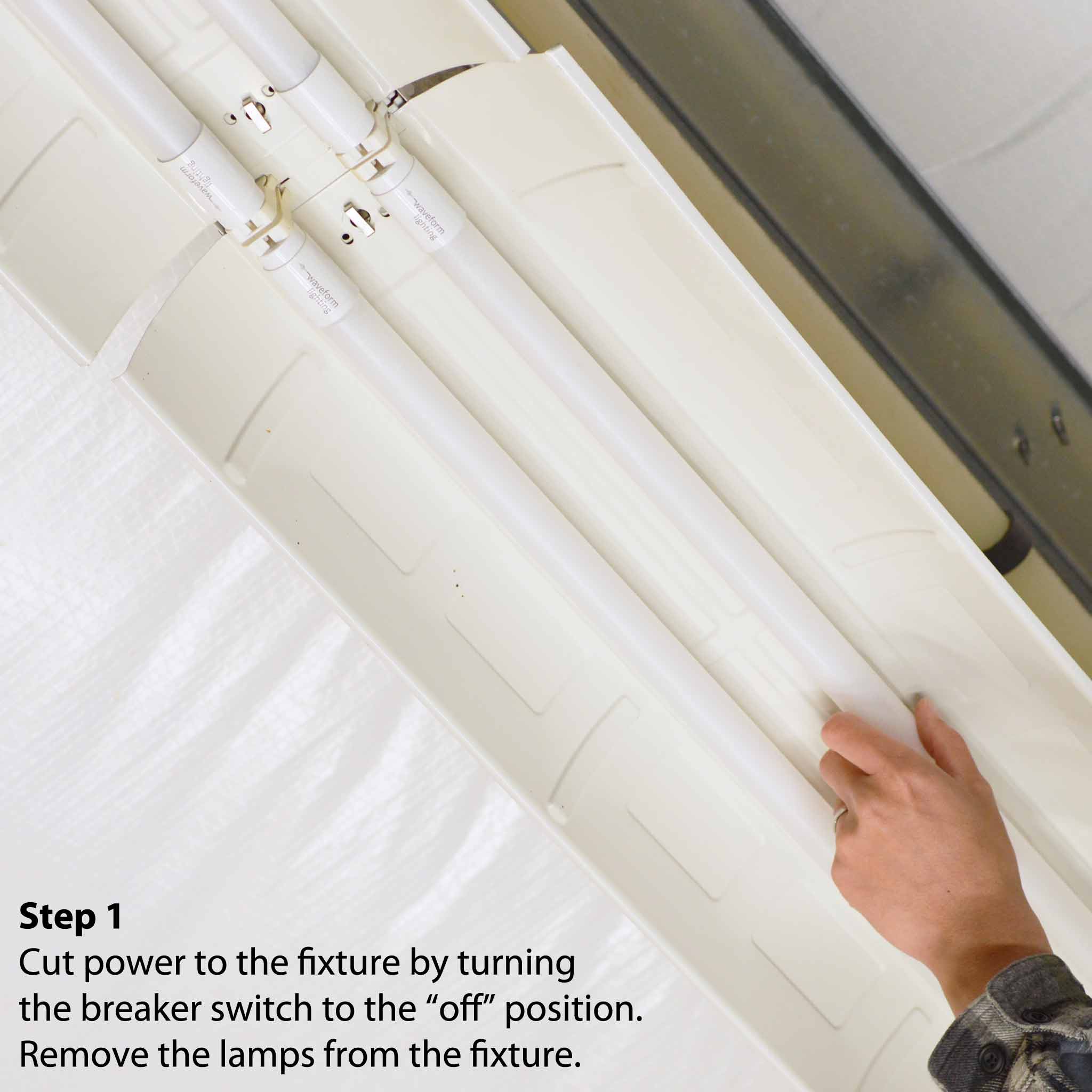
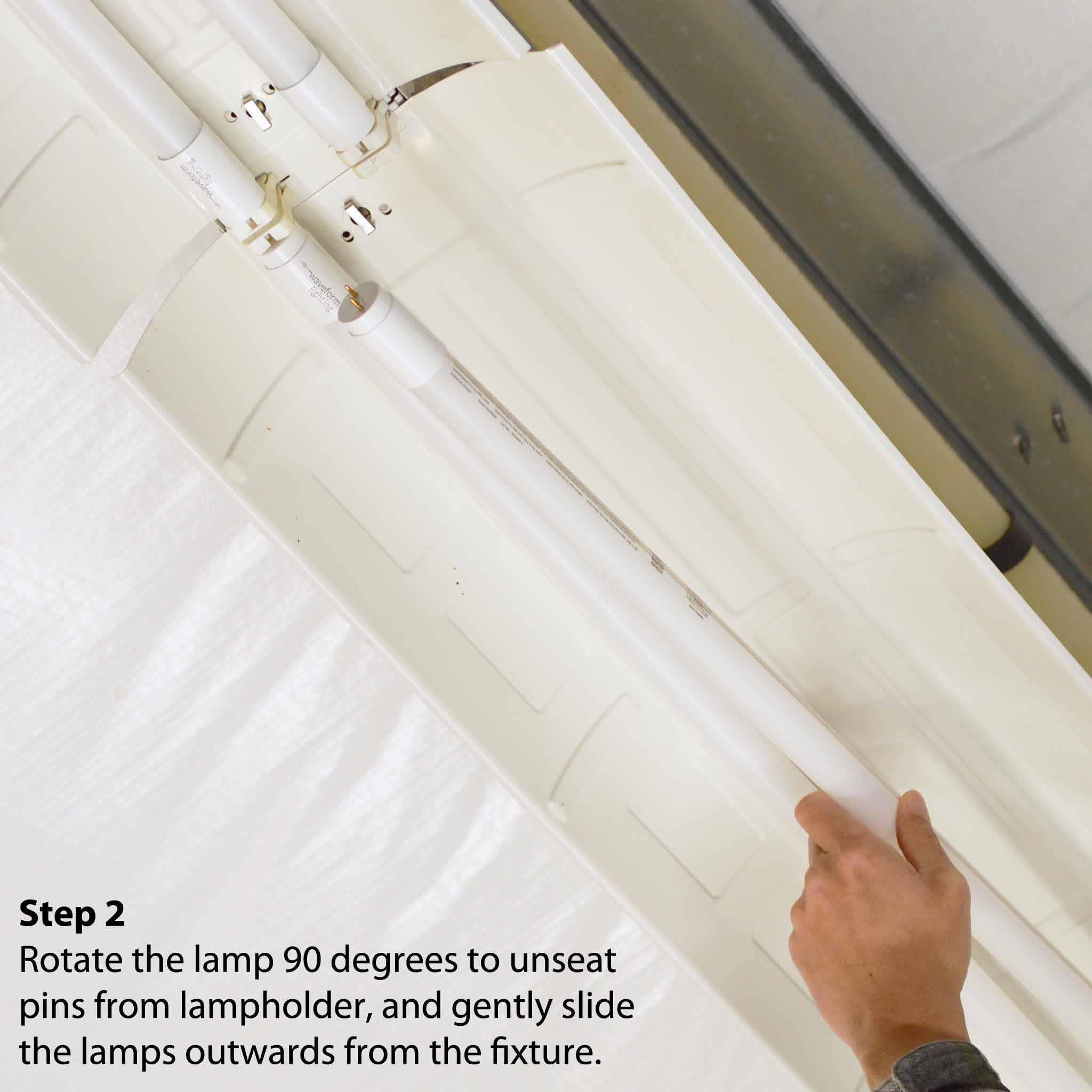
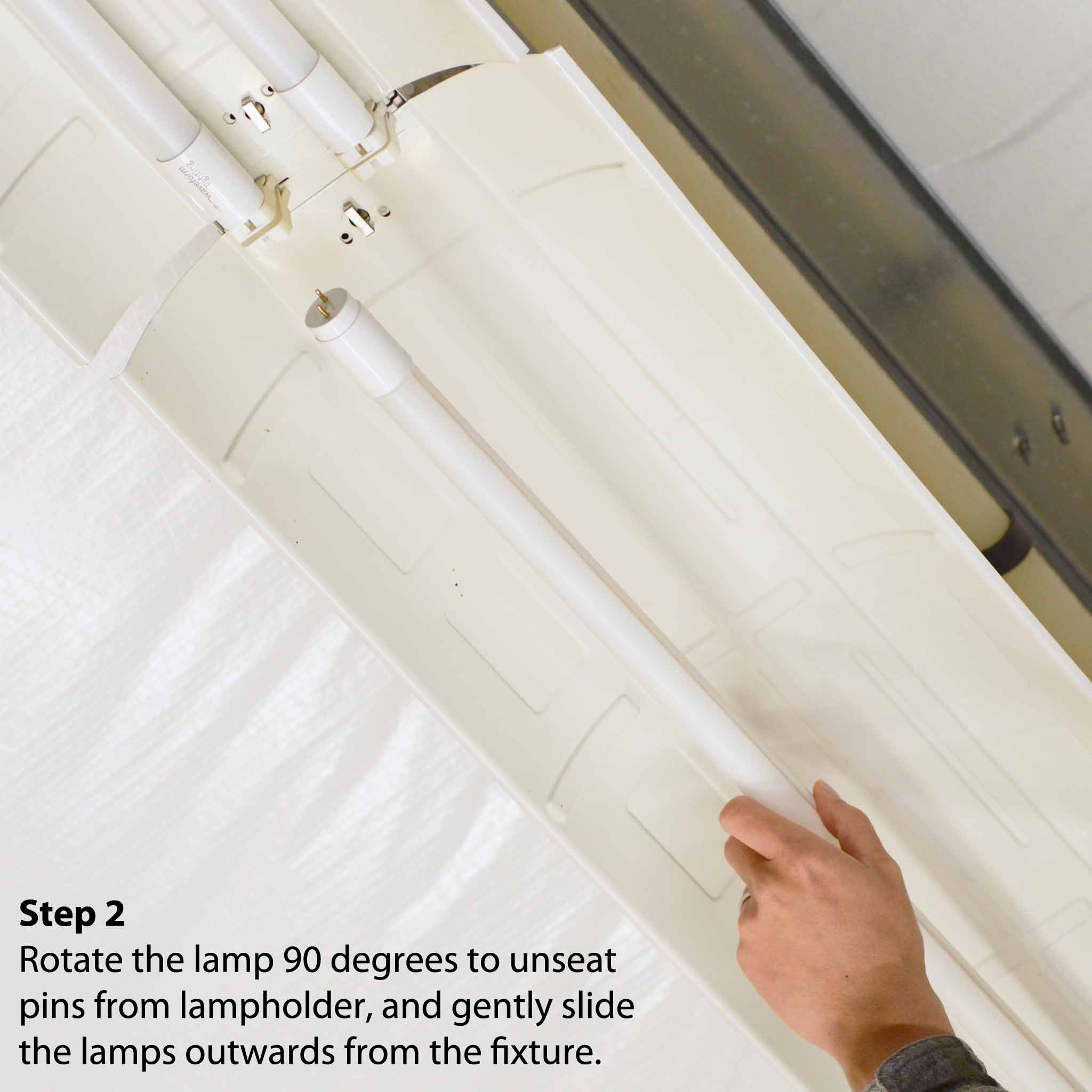
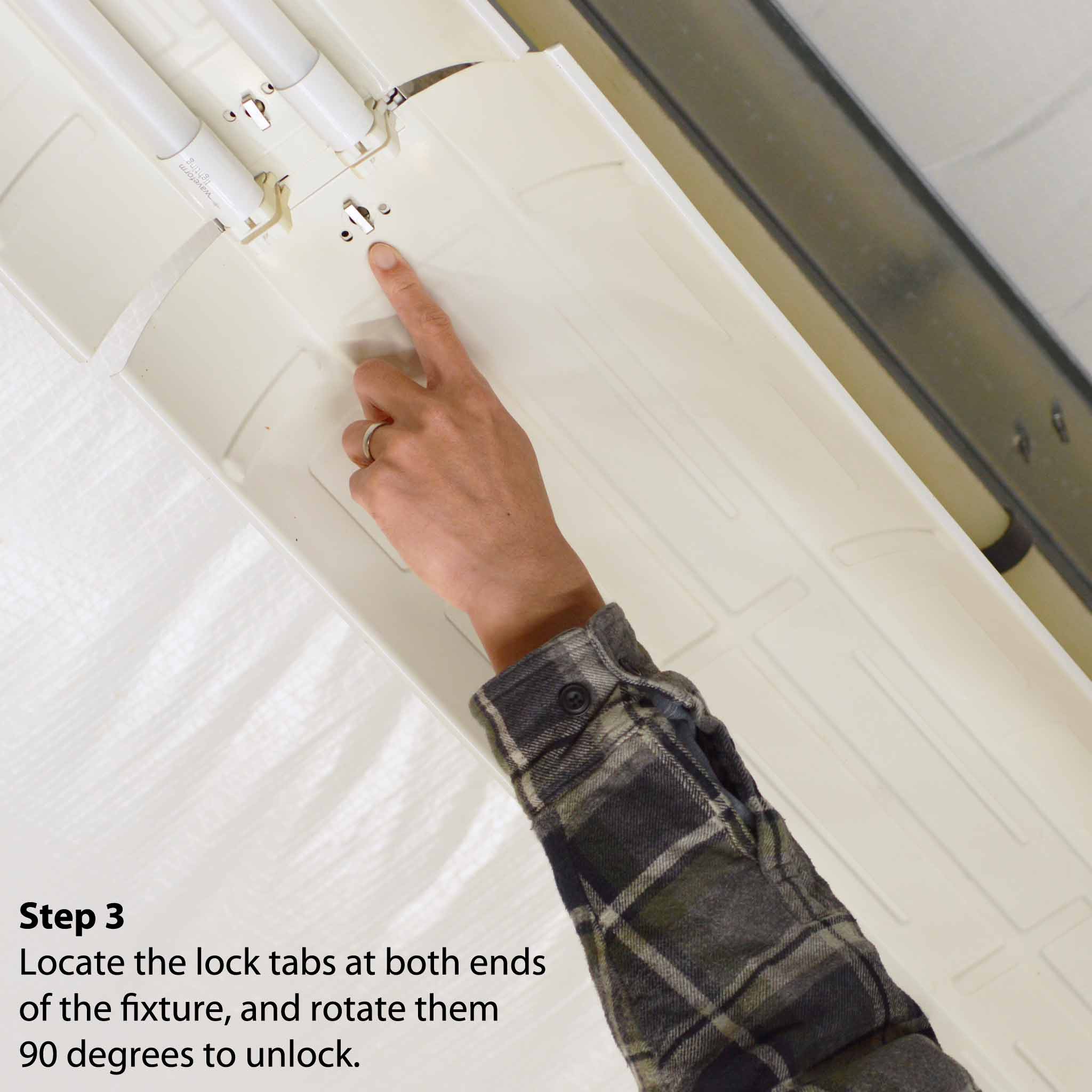
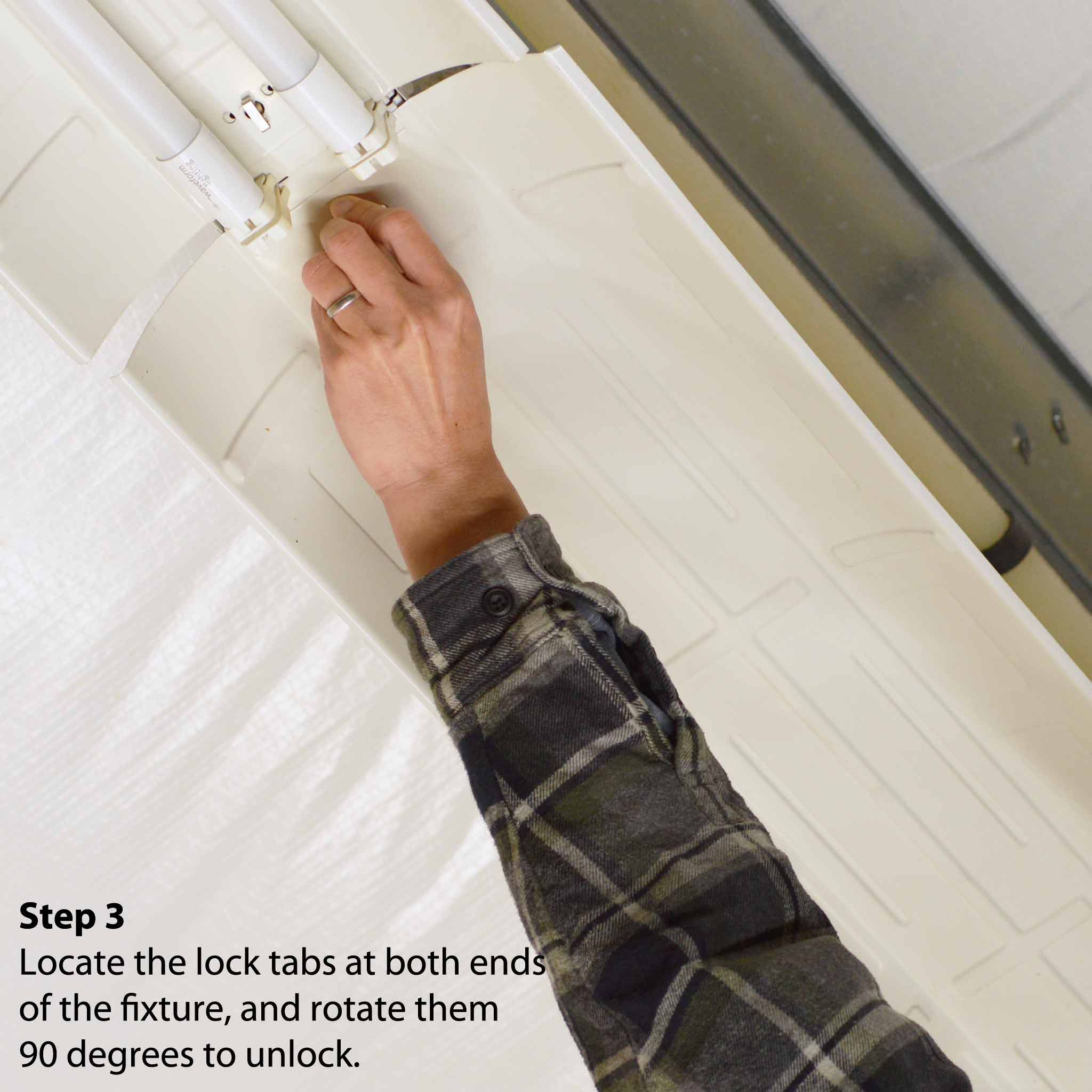
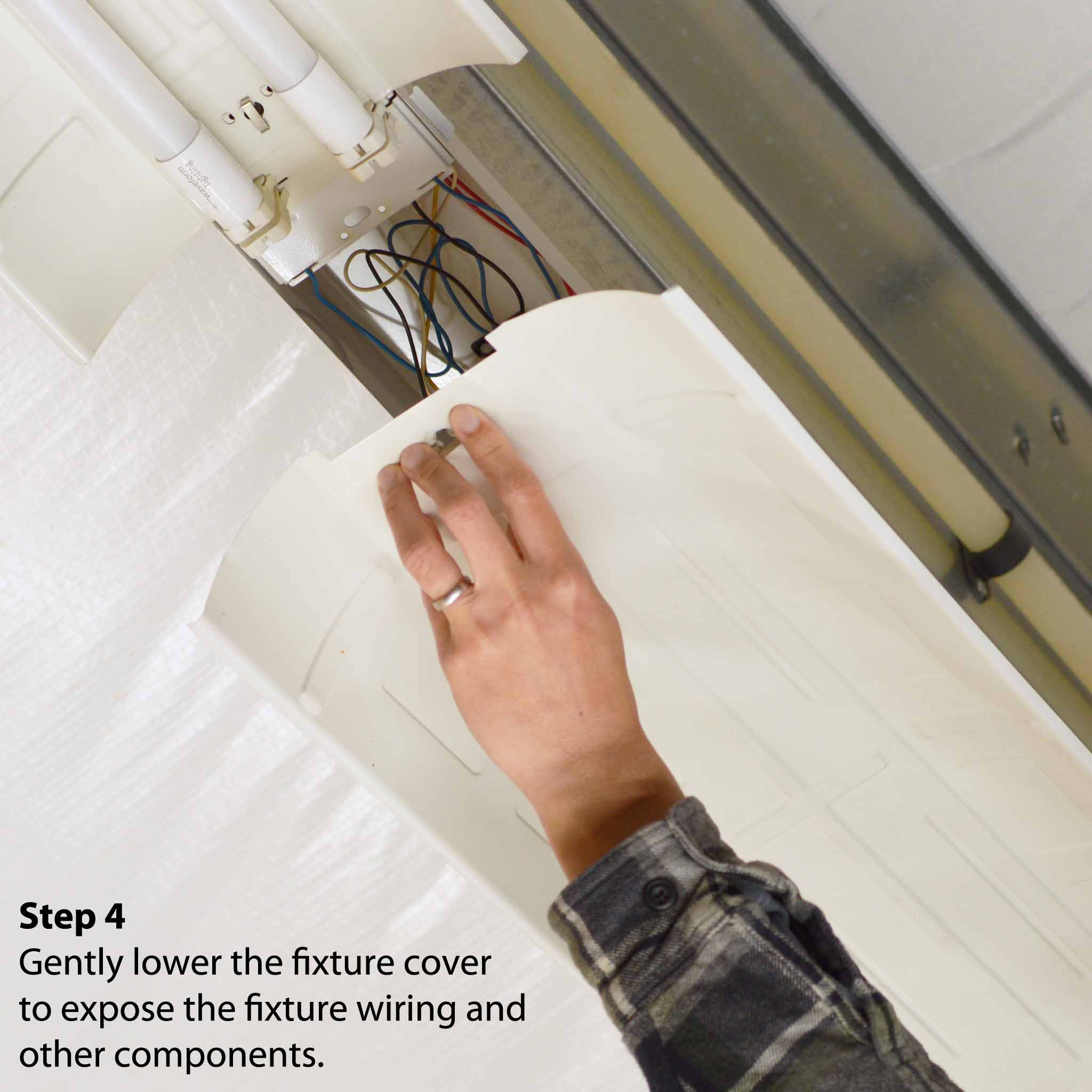
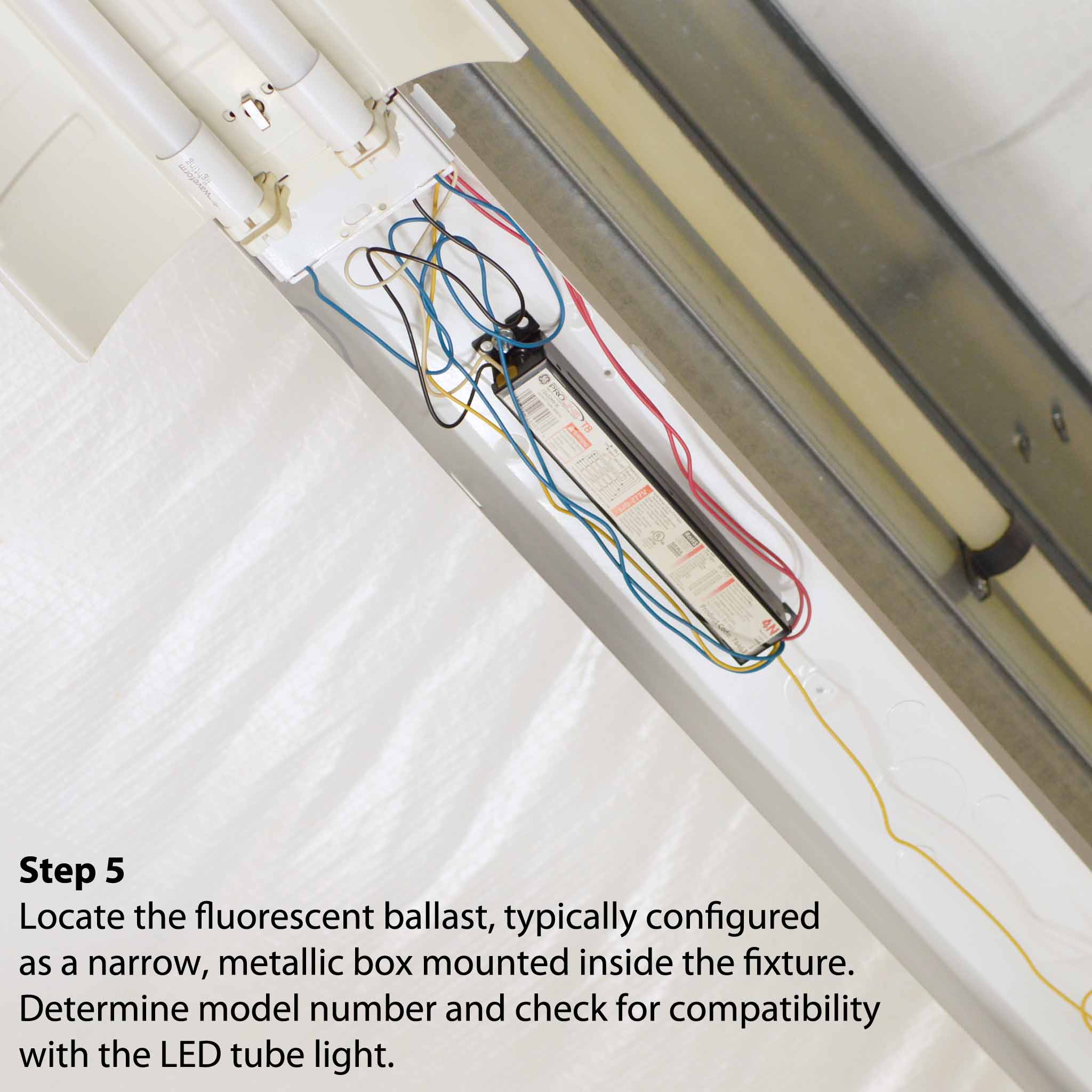
Color Temperature Selection
LED tube lights are available in a wide range of white light colors ranging from neutral white to cool white. Color temperature, measured in degrees Kelvin, is the most precise way to describe a light’s color.
Most LED tube lights are designed for use in commercial, retail, and industrial settings, so you will find that most LED tube lights have higher color temperatures (whiter / bluer) than residential lighting products. Most residential lamps are in the 2700K – 3000K range (i.e. warm white), but you will find most LED tube lights to be in the 4000K – 6500K range.
4000K is typically the “warmest” color option available for LED tube lights. 4000K light offers a softer light color commonly used in retail and commercial settings. It has a subtle yellow-orange hue and most closely resembles morning or late afternoon sunshine.
5000K is a light color that most closely matches noon daylight. It is considered the most “neutral” white color and is used in color-critical applications in graphic arts, printing, and other visually intensive industrial processes (also look for D50 ISO-compliant products). 5000 K will produce a strong and “bright” lighting effect which is typically not suitable for home or residential installations, especially during evening hours.
Finally, 6500K is a light color that is most similar to the north-facing blue sky. Its D65 counterpart also matches the ISO standard for digital arts and other screen-based work. 6500 K is well suited for art studios and digital artwork studios (e.g. post-production photography work). As with 5000 K, we generally only recommend 6500K for specialty applications that require specific daylight-calibrated light color.
Color Rendering
In addition to an LED tube light’s color temperature, its color rendering index (CRI) rating is an additional metric that you will also want to consider.
Color temperature is a measure of how “warm” or “cool” the light’s color appears. On the other hand, color rendering is a measure of how accurately colors appear under the light source. Under a low CRI LED tube light, colors might appear distorted, washed out, or indistinguishable. High CRI LED products offer light that allows objects to appear the way they would under natural daylight. You will also want to look for an LED tube light’s R9 value, which provides further information about how red colors are rendered.
Many LED tube lights have a CRI value of 80 or lower, which is generally acceptable for spaces such as parking garages and storage facilities. In spaces where color appearance can start to matter, such as retail and industrial spaces, 90 CRI or higher is recommended. For the most color-critical installations, such as color inspection stations or studios, 95 CRI or higher is generally needed.
Adjust the sliders below for a visual demonstration of CRI vs color temperature in action.
Warmer ← Color Temperature → Cooler
Lower ← CRI → Higher
